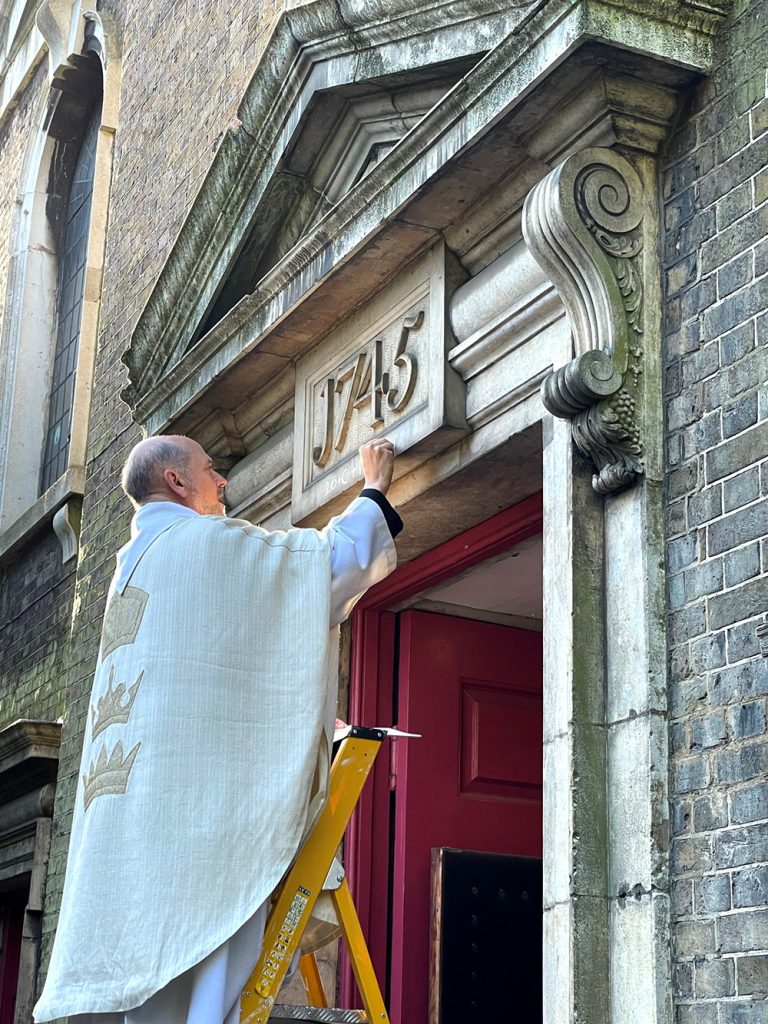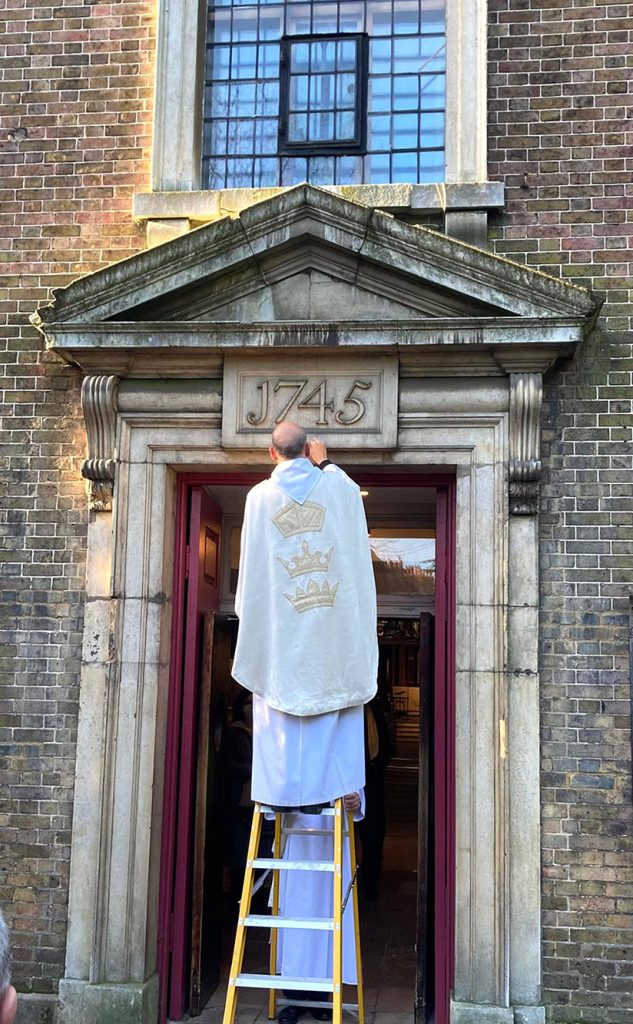Blessing of Chalk
On Sunday 9th January we celebrated Epiphany, when the Church commemorates the visit of the ‘Three Wise Men’ to the baby Jesus. This was also an occasion when the Vicar went up a ladder for the ceremony of ‘The Blessing of the Chalk’. What is the significance of this practice? According to an article in The Church Times, the blessing and distribution of chalks with which houses (and churches) are marked with a special logo commemorating the visit of the Magi is a Catholic custom that seems to have originated in and spread from Central Europe at the end of the Middle Ages.
On or near the feast of the Epiphany, and conveniently close to the beginning of a New Year, the tradition has been to ask God’s blessing on homes and churches and to mark the door post or lintel with chalks that have been blessed for that purpose. The doors are chalked with the legendary names or initials of the three Magi, and the numerals of the New Year, connected with a series of crosses. The initials C, M, and B commemorate the Magi, Caspar, Melchior, and Balthasar, but also stand for the Latin prayer-request Christus Mansionem Benedicat: “May Christ bless this house.” So above the entrance to the church you will see the following marked in chalk – 20+C+M+B+22.
This Epiphany ceremony is a simple but meaningful act of witness which symbolises Christian willingness to offer hospitality and shelter to the Magi on their journey to Bethlehem, and also, by extension in today’s world, to welcome all and sundry who love or are seeking the Lord’s Christ.


We were each invited to take a piece of chalk to mark our own doorways.